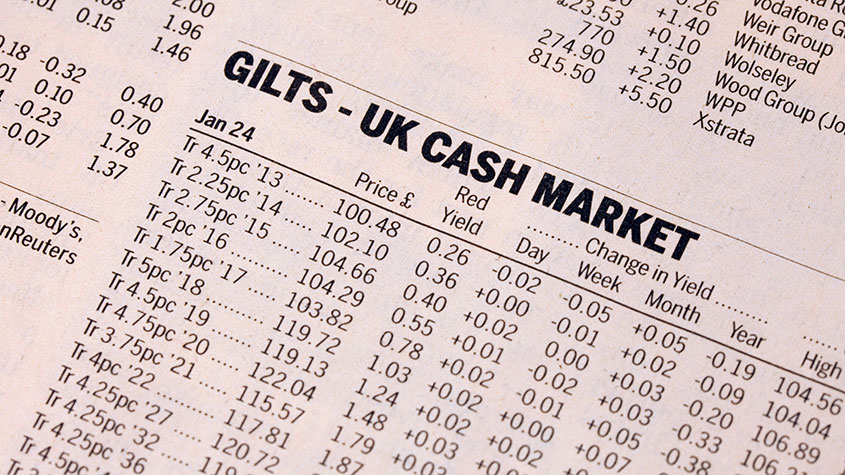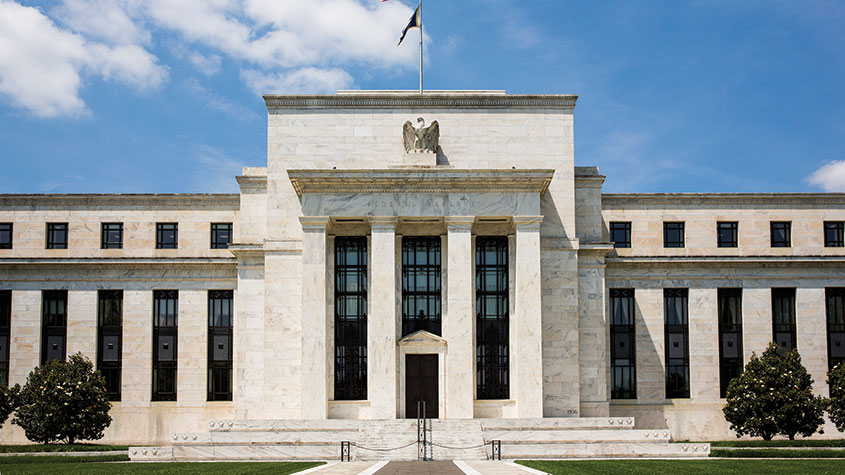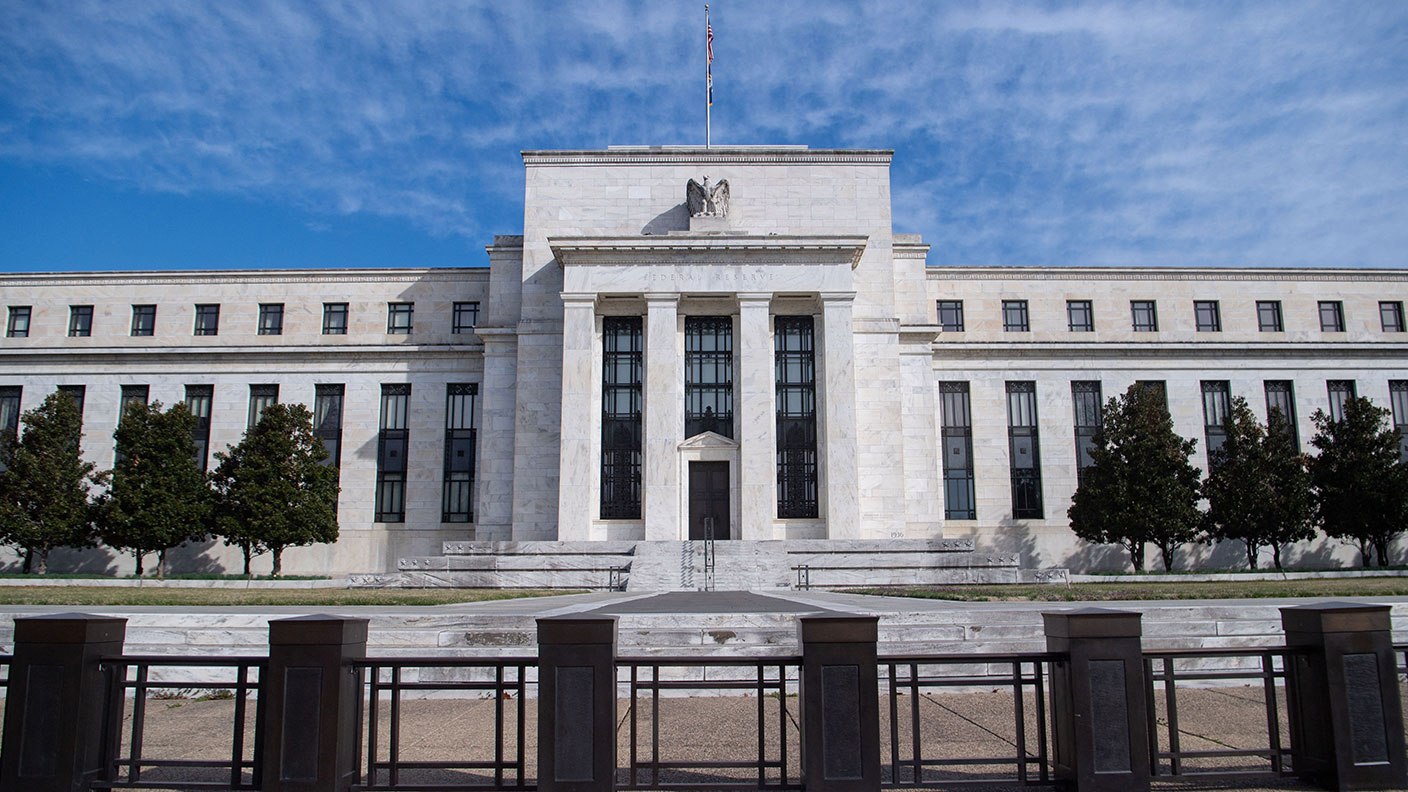The bear market in bonds isn’t all bad news
The rise in bond yields and the fall in bond prices can be a good thing or bad thing. Bad for bondholders, but good for many risk-averse pensioners and pension savers. Max King explains why.

Is the rise in bond yields and corresponding fall in bond prices bad news or good news? It depends on your perspective.
In the last year, yields on ten-year gilts (UK government debt), having been barely positive a year earlier, rose from 0.5% to a mid-June peak above 2.5%, though they have since slipped back to 2.1%.
Yields on 30-year gilts have risen from below 1% to over 2.5%, resulting in a capital loss to holders of these bonds of 20%.
MoneyWeek
Subscribe to MoneyWeek today and get your first six magazine issues absolutely FREE

Sign up to Money Morning
Don't miss the latest investment and personal finances news, market analysis, plus money-saving tips with our free twice-daily newsletter
Don't miss the latest investment and personal finances news, market analysis, plus money-saving tips with our free twice-daily newsletter
Given that these yields remain below those of the comparable US Treasuries (US government debt) against the historic norm, it is likely that they will continue to rise and that the multi-century lows of a year or two ago were an anomaly.
Who owns all our debt?
This is clearly bad news for holders of gilts – but most private individuals sold out long ago. Maybe some pension funds still held some, though they would be wise to keep that quiet. Insurance companies, who are heavily restricted by “solvency” rules, are significant holders of gilts, but mostly short-dated ones with little capital risk and a modest yield premium over cash deposits.
The big holders, according to the Financial Times, are now “overseas” – central banks on behalf of their governments as part of the deployment of their foreign exchange reserves – and the Bank of England, which has bought back £875bn of gilts, 45% of the total in issue.
This means that the UK government’s debt-to-GDP ratio, nearly 95% gross, is only 52% net, though that would rise if the Bank of England has to sell some or all of those gilts to rein in excess liquidity. Excess liquidity would be the result of a surge in bank lending, which has been severely curtailed since the financial crisis, but that looks unlikely to happen.
The other big loser from higher gilt yields is the government and, through them, the taxpayer who, as existing gilts mature and are refinanced, will have to pay a higher interest rate. Debt service costs, excluding those on gilts owned by the Bank of England, currently sit at £40bn per year. That’s 1.7% of national income and 4.3% of public spending. This is set to rise inexorably.
On the other hand, ultra-low borrowing costs have encouraged the government to spend vast amounts of money on vanity projects such as HS2, though, fortunately, they have not (yet?) reached the lunacy of France’s nationalisation of EDF. Curtailment of government extravagance would be positive for taxpayers and the economy, even if higher rates do raise the hurdle for private sector infrastructure spending.
Why rising gilt yields can be good news for pensioners
Other potential winners are risk-averse pensioners, who are at last seeing annuity rates rise. This means that the lump sum in their pension pots will buy a higher lifetime income – one which is completely safe from market and economic volatility – than it did a year ago. Annuity rates are estimated to have risen 23% since their low in early 2021.
The other big winners are members and providers of fully-funded defined benefit pension schemes. Notable among these is the Universities Superannuation Scheme, a £90bn fund covering over 400,000 people employed in higher education.
In recent years, the fund has been reporting mounting deficits, reaching £14.1bn at the March 2020 valuation. Assets were calculated by the actuaries to be only 83% of commitments, though calculations depend on a number of assumptions. These include: longevity, future contributions, investment returns, future pension entitlements and – crucially – discount rates. The latter, the rate at which future liabilities are discounted to the current day, are based on gilt yields.
A sensible critic might argue that there are so many uncertain assumptions as to make the conclusions highly unreliable, but the trustees have to follow the “professional” advice of the actuaries and the employers have to implement the recommendations, subject to any push-back they can exert.
The employees had seen a remorseless squeeze on their entitlements and a sustained rise in their contributions. The rise in employer contributions was passed onto them (higher education institutions having little spare room in their finances) in lower pay increases. The result was understandable fury and a series of trade union-supported walk-outs across the country.
A further squeeze on benefits was implemented at the start of April. But soon after, the Universities Superannuation Scheme announced that its 31 March valuation had shown that the deficit had fallen to just £1.6bn, making the scheme 98% funded. Moreover, this was primarily due to an increase in assets rather than to a higher discount rate, the result of higher gilt yields, reducing liabilities.
Since gilt yields rose further in the second quarter and, notwithstanding the recent decline, are likely to rise further still, the position of the Universities Superannuation Scheme and other defined benefit schemes is likely to continue to improve.
In the short term, weak markets, notably equities, will have reduced assets but these losses will be soon recovered as markets resume their long-term relentless move upwards.
Staff should now be able to look forward to a reinstatement of benefits and/or lower contributions while the financial squeeze on higher education will diminish.
The losers are the actuaries, whose reputation is tarnished, and the trustees who loyally followed them. As one bemused finance director said, “the pensions system is supposed to reduce the volatility of everyone’s exposure to the vagaries of markets but it’s done precisely the opposite.”
There is one final loser from the rise in bond yields – advocates of “modern monetary theory” (MMT) who claim that government spending should not be constrained by rising debt as central banks can just create money to finance it. This theory attracted a following among progressive economists and politicians but has now been buried.
The recent rally in bond markets helps limit the scale of necessary interest rate rises and underpins equity markets. But in the longer term, a return to yields which are moderately higher than much lower inflation would mark a return to sanity.
Get the latest financial news, insights and expert analysis from our award-winning MoneyWeek team, to help you understand what really matters when it comes to your finances.

Max has an Economics degree from the University of Cambridge and is a chartered accountant. He worked at Investec Asset Management for 12 years, managing multi-asset funds investing in internally and externally managed funds, including investment trusts. This included a fund of investment trusts which grew to £120m+. Max has managed ten investment trusts (winning many awards) and sat on the boards of three trusts – two directorships are still active.
After 39 years in financial services, including 30 as a professional fund manager, Max took semi-retirement in 2017. Max has been a MoneyWeek columnist since 2016 writing about investment funds and more generally on markets online, plus occasional opinion pieces. He also writes for the Investment Trust Handbook each year and has contributed to The Daily Telegraph and other publications. See here for details of current investments held by Max.
-
 Will HMRC block money market funds from the stocks and shares ISA allowance?
Will HMRC block money market funds from the stocks and shares ISA allowance?Cautious investors looking for cash-like returns could be prohibited from using money market funds in a stocks and shares ISA under new ISA rules from HMRC. What could it mean for you?
-
 Nationwide: House price growth slows but market remained resilient despite Budget worries
Nationwide: House price growth slows but market remained resilient despite Budget worriesThe average price of a house in the UK was £272,998 in November, as annual house price growth slowed to just 1.8%, Nationwide said.
-
 Is it time to buy Gilts?
Is it time to buy Gilts?Advice Gilts offer a higher yield than most savings accounts and could be an attractive alternative for those with a large lump sum to invest.
-
 Liability-driven investment: another financial fix has backfired
Liability-driven investment: another financial fix has backfiredAnalysis Liability-driven investment (LDI) has become the latest widely touted investment product to go horribly wrong, says Max King.
-
 Why the Bank of England intervened in the bond market
Why the Bank of England intervened in the bond marketAnalysis A sudden crisis for pension funds exposed to rapidly rising bond yields meant the Bank of England had to act. Cris Sholto Heaton looks at the lessons for all investors.
-
 What the return of the bond vigilantes means for investors
What the return of the bond vigilantes means for investorsAnalysis The US Federal Reserve is dancing to the tune of the bond vigilantes, says Max King. Here’s what that means for stockmarket investors, the economy, and you.
-
 A retail bond for income investors with a 6.5% yield
A retail bond for income investors with a 6.5% yieldTips This new issue from LendInvest could be attractive to income seekers willing to take some risk.
-
 The junk-bond bubble bursts
The junk-bond bubble burstsNews Yields in the US high-yield bond market (AKA junk bonds) have soared to more than 8% since the start of the year as prices collapse.
-
 The bond-market bloodbath isn’t over yet
The bond-market bloodbath isn’t over yetNews The bond-market sell-off isn’t done by along chalk – rising interest-rates could yet push yields higher.
-
 The bond bubble has burst – what comes next?
The bond bubble has burst – what comes next?Analysis Investors in government debt have seen some of their biggest ever losses as the bond bubble bursts. John Stepek explains what’s going on and asks what might make prices turn back up again.
